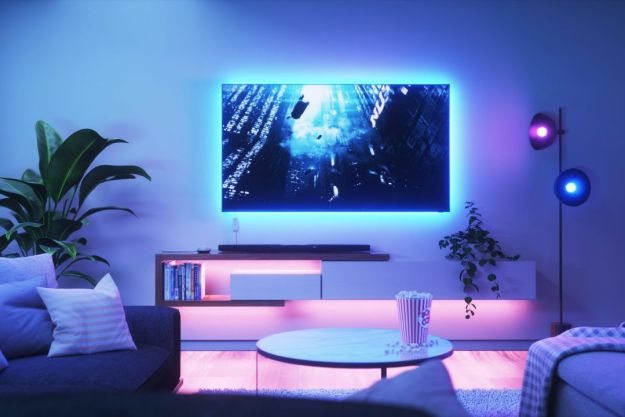Secret knocks have long been used to gain entrance to treehouses, clubs, and forts, and now you can actually use one to unlock your front door.
Swan Solutions decided to take the idea of specialized knocks and apply it to everything in your house. The Knocki is a silver-and-white hockey puck-shaped device that lets you turn on your lights, change the song you’re listening to, or switch off the TV. Much like other similar smart home remotes, it wants to eliminate the hassle of having to pull out your phone every time you need to interact with a connected device.
We wrote about Knocki in August, but the company went live with its Kickstarter campaign Tuesday morning and it has already seen tremendous success. Knocki surpassed its $35,000 goal in a little more than an hour — and has since more than doubled the amount. As of publication, Knocki is sitting at $81,487, with 45 days left to go in the campaign.
Here’s how it works: It associates a series of knock patterns with different outcomes. Two quick knocks might turn on your alarm system, while three slower knocks help you find your phone.
Related: Make your home a smart home, see the latest in connected home devices here
Created by Jake Boshernitzan and Ohad Nezer, the Knocki connects to Wi-Fi and runs on AAA batteries. Instead of using microphones, it’s equipped with accelerometers and uses algorithms to detect the differences between knocks — and to keep it from turning off the lights if the bass is thumping. Similarly, it has a sort of “wake-up knock,” so it won’t trigger just because someone knocks on the front door. Still, if you want to get a notification when someone knocks, it can do that, too.
Boshernitzan gave us a look at how Knocki worked via Skype, and it was pretty impressive. Sure, there were moments now and then when Knocki didn’t register a tap pattern, but it only happened sparingly. Boshernitzan tapped anywhere on a relatively long table, and Knocki still registered his pattern. When he tapped several times to simulate accidental taps, Knocki, as expected, didn’t recognize anything.
An LED flashes for each tap Knocki recognizes, if you want a visual cue. But of course, it’s not going to be helpful if Knocki is out of your sight — where you put the device is up to you. It works on wood, metal, stone, and drywall, so you can hang it on the wall or leave it on a table. You can either screw it in place, or use a special adhesive from 3M and the Knocki team.
“If you enable a wall with Knocki, you allow anyone, whether they’re in a wheelchair, or elderly, or a child that can’t physically reach a switch, to literally go to any part of the wall and then control it by knocking,” Boshernitzan told Digital Trends. “And it’s also a simpler than having to take a phone out to look through a bunch of different apps to find a specific one to control a specific device.”
The company is building an app for Android and iOS you will need to set up Knocki and the patterns. Boshernitzan said a Windows desktop tool isn’t in the works, but the company will consider making one if there’s demand.
What’s neat about the little puck-shaped device is that it already has integration with several smart home products and apps, such as with Google’s Nest thermostat, SmartThings, WeMo Coffeemaker, Google Calendar, Spotify, and IFTTT. The IFTTT integration is especially useful since you can trigger more reactions with your smartphone.
As with other smart-home remotes, the Knocki seems to offer some convenience with a few drawbacks. It can only recognize 10 different knocks, so it’s not going to handle everything a smartphone can, and if you stick it on the wall near the front door, it’s not going to be much help turning off your bedroom lights. If you wanted to utilize it several places, you’d have to buy more devices, and that cost can add up quickly. Plus, several different series of knocks is just another thing to memorize.
But if you want to give a new meaning to a hard-knock life, the Kickstarter is offering a special discount at $69. The retail price of Knocki is $129, and the device will ship to backers in December.
Updates:
Updated on 05-17-16 by Julian Chokkattu: Added in news of the Knocki’s Kickstarter launch and success, as well as our experience watching a demo of the product.
Editors' Recommendations
- Segway expands its smart home footprint with robot lawn mowers at CES 2024
- Home Depot expands its Hubspace smart home lineup at CES 2024
- Matter adds support for fridges, air purifiers, robot vacuums, and more with massive 1.2 update
- Eufy’s new X9 Pro Robovac offers automated mopping and vacuuming for less than $1,000
- Amazon might be bringing AI smarts to its Astro household robot


